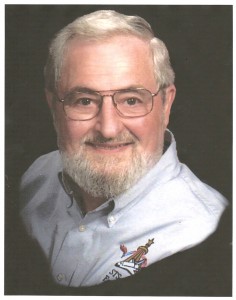Nominated 2013
 Alfred James Treder, and family moved to Berlin when he was 5 years old. He has worked various aspects of space and missile Guidance & Control systems for over 50 years, from conceptual design through development and flight. Since the early 1990s he has been a key player in the specification and development of the Guidance, Navigation and Control subsystem for the United State’s part of the International Space Station. His primary responsibility was making sure the Station met its pointing accuracy requirements.
Alfred James Treder, and family moved to Berlin when he was 5 years old. He has worked various aspects of space and missile Guidance & Control systems for over 50 years, from conceptual design through development and flight. Since the early 1990s he has been a key player in the specification and development of the Guidance, Navigation and Control subsystem for the United State’s part of the International Space Station. His primary responsibility was making sure the Station met its pointing accuracy requirements.
Treder graduated from Marquette University in 1963 with a Bachelor Degree in Electrical Engineering. His first exposure to space projects was with Gemini manned capsule avionics testing. He later was involved in the Apollo avionics design. In 1976 he was on the flight team for the Viking Mars program which did the first successful Mars landings. His job with Boeing in the Seattle area introduced him to the International Space Station. He became Senior Principal Engineer and formed the ISS Pointing Accuracy Assessment Team in late 1993. After retiring from Boeing in 2000 he continued to be involved with the space station as a contract engineer, a job he held until 2011.
Treder has written multiple articles for a variety of publications on his work in the U.S. Space Program. He is an Associate Fellow of AIAA (American Institute of Aeronautics and Astronautics) and a longtime member of the AIAA Astrodynamics Technical Committee.
With his second retirement he is now spending time with his other passion, photography, as a professional artistic photographer. His work has been shown in art shows and has been published in major magazines.
One of his favorite sayings is: Hard work spotlights the character of people: some turn up their sleeves; some turn up their noses, and some don’t turn up.
